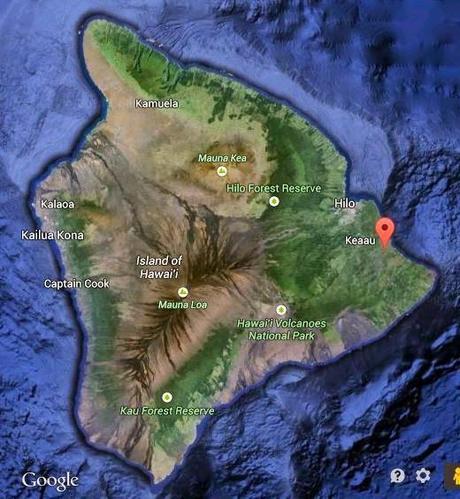
The red dot shows HPP where I lived in the
early to mid 1970s.
The woman I call, "The Mother" in my book, bought a house in the Hawaiian Paradise Park subdivision, (HPP). The school bus carried us along Highway 130 to Pahoa where we went to school. You can see the route on the map below. I think it was about seven miles.
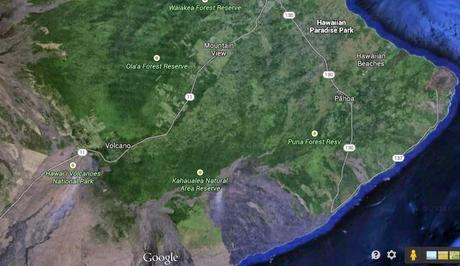
From this map you can see where Pahoa is located and its close
proximity to Kilauea Volcano.
Pahoa was and still is a small town with brightly painted buildings crowded against its main street. According to Wikipedia, the population in 2010 was 945 and 14% were white. At the time I lived there, the Caucasian population was probably less that 1% and the racial acrimony was traumatic for my siblings and me. It was a huge culture shock arrive at school only to be mocked and judged harshly for blonde hair and blue eyes.
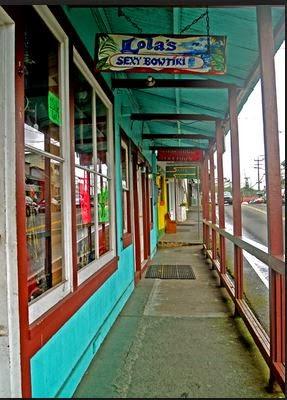
Pahoa
I remember visiting the volcano on several occasions. It wasn't a long drive, either from HPP or from Pahoa School and I suppose the teachers thought it was a great teaching tool. Once the bus went as far as it could we'd disembark and walk up Chain of Craters Road until the lava stopped us. The teachers would then lead us on a trail towards the petroglyphs--ancient writings on the lava. Unfortunately, being on hallowed ground meant nothing to that small, traumatized me.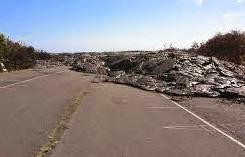
Many nights my siblings and I could see an eerie glow from our bedroom window, evidence of turmoil in Kilauea's Halema'uma'u Crater. At that time, the lava seemed to take the path of least resistance, flowing southeast, towards the ocean. Other than numerous small but unnerving earthquakes, the volcano was a fairly innocuous part of life.
Long after I left Hawaii and pushed those years from my mind, Kilauea's activity continued. Now and then I'd hear obscure bits about lava covering Kalapana, a town south of Pahoa where many of my school mates lived and Black Sands Beach, one of The Mother's favorite drop-off points where she would leave us to ourselves for a few hours while she drove off to pursue esoteric adult things. It was difficult to imagine those places no longer existing but this is how lava flows work. They obliterate everything.
On June 27 of this year, a new opening in Kilauea's Pu'u 'O'o vent began sending lava down a different path, towards the town of Pahoa. Thanks to the Internet, my sister and I have been keeping tabs on the progression of lava and how it will affect the residents of Pahoa.
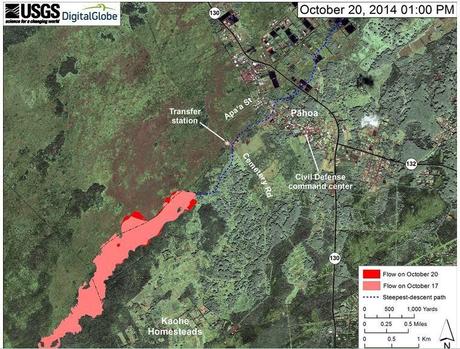
USGS map showing current lava flow.
From the map (above) you can see the lava flow and how it is inching closer to Pahoa. Although there are ways to divert the flow away from areas inhabited by people, locals refuse to do this, citing ancient taboos that would anger volcano goddess, Madam Pele. On a pragmatic level, I have to wonder what could be worse than having lava cover your home or being trapped because lava has covered the main access roads. But there remains a small part of me that remembers and understands the sacredness of Hawaiian traditions.I'll keep you posted.


